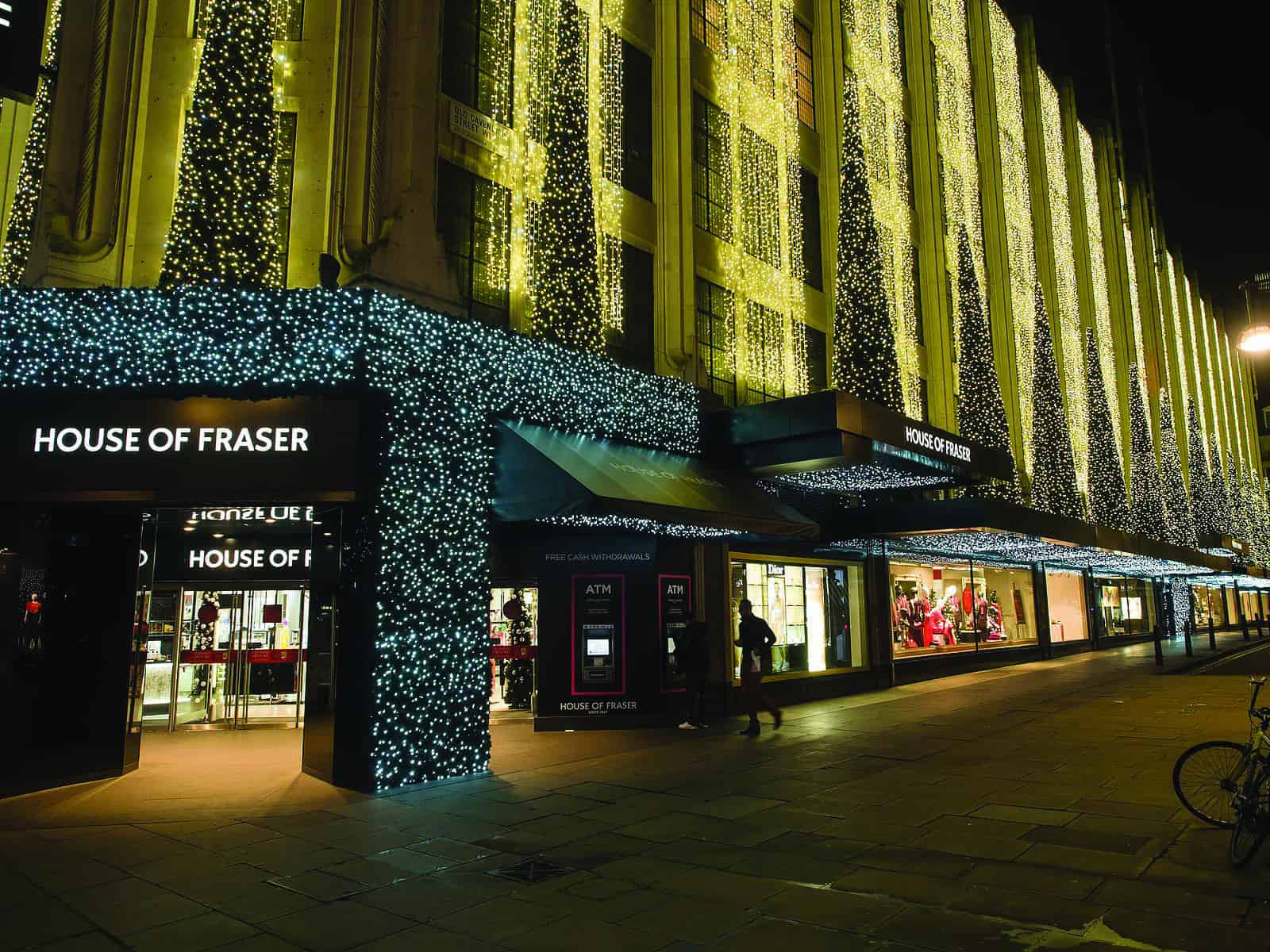Today’s busy consumers want to be able to shop across channels and with minimum fuss. Enabling them to do this, argues Paul Skeldon, is tough, but leading companies don’t shirk the challenge
Back in 2008, Kleiner Perkins Caufield Byers analyst Mary Meeker predicted that, in 2014, mobile would pass desktop as the main way of accessing the web worldwide. This actually happened in May of that year and now, in many markets, considerably more than 50% of retailer traffic comes from mobile. It now plays a key role in how consumers shop across all channels.
However, while traffic to retailer websites – and apps – is coming from mobile, it doesn’t mean that the sale always takes place there. Where Meeker’s prediction fell short was its expectation that sales would move to mobile. This hasn’t always been the case, with many European retailers seeing mobile becoming part of a more complex purchase path.
For retailers this means that cross-channel integration – with mobile often used as the ‘glue’ to hold things together – has become a priority. This has been reflected in the research findings in the InternetRetailing EU Top500 research, and retailers have responded to this consumer move towards mobile with the development of mobile website and apps. In many cases, retailers are also starting to integrate this work into a cross-channel strategy, yet results in Europe have been mixed.
Top50 retailers in the InternetRetailing EU Top 500 research – such as the Czech general merchandiser Alza, computer and phone giant Apple, and UK department store and fashion retailer House of Fraser – all have highly functional apps which operate across borders and are transactional. Many others don’t offer this functionality, with only 30% of all the apps assessed in our research being transactional. So what else are the top performers getting right?
Czech store Alza has an app with transactional functionality, but two out of three retailers don’t
The need for speed
The top retailers across the EU in the IREU500 research all have one thing in common: they have a fast web presence on mobile. Across the body of retailers analysed, the average webpage load speed (out of 100) was 82.5. Retailers in Denmark clocked up an impressive 86, Dutch retailers 85, and brands in Sweden, Belgium, Austria and Switzerland came in at 84 apiece.
Working with Knowledge Partner BuiltWith, the study finds that most top-ranking retailers adhere to the fastest web standards and offer the best download speeds. BonPrix’s Swiss and German sites logged a speed score of 93 – the retailer’s overall average dragged back to 79 by slower times in Lithuania and Estonia. Albert Heijn in the Netherlands scored the fastest of all in Europe, however, with a mighty 95 out of 100 and the site loading in 7.6s.
On the app front, top-flight retailers also offered speed, although it was in functionality and design where they score highly, separating elite retailers from the rest.
Alza offers a good insight into what makes a top tier pan-European mobile retailer. It runs dedicated iOS and Android apps in the UK, Czech Republic, Slovakia, Germany and Austria. Its pan-European Alzashop app is available in 23 EEA countries and offers product ratings, customer reviews and the ability to share products on social media. The Alza app also offers advanced ‘searchandising’ through predictive search.
Apple, as you might expect, comes out strongly, with highly interactive and transactional app functionality that works across borders. Available in 14 European languages in the EEA region, the Apple Store app is transactional and native, offers daily deals, displays store finder information, multiple product images and offers the ability to zoom, as well as allowing users to leave product ratings and reviews. It also features a wishlist and a range of interesting app features, including EasyPay receipts and appointment reminders. Customers can return their unwanted goods within 14 days via drop-off at the store in 19 countries within EEA region.
The UK’s House of Fraser – already an Elite retailer in the InternetRetailing UK Top500 – also performs well across the EU. House of Fraser allows customers to order via an iOS app, pick their orders from the store and return any unwanted goods to stores within 28 days. House of Fraser’s iOS app secured top marks for app functionality with rare features, including the ability to enter and scan loyalty cards, a barcode scanner and a store finder available on the app. It achieved top marks on both ‘searchandising’ and personalisation, and offered augmented reality – the ability to scan pages from the House of Fraser magazine in order to find out more about featured products.
“We expect to see continued growth in the European online retail market, with mobile devices being a real driving force of this growth,” Andy Harding, former chief customer officer at House of Fraser, noted early in 2016. “The key to success is having a consistent customer-centric approach that gives a personalised shopping experience.
We do this by linking all our channels to market together. “Being a multichannel retailer in Europe means having a seamless offline and online proposition that engages with customers through mobile and this will continue to be an essential part of what we do.”As Harding points out, the key to being a successful mobile and cross-channel retailer lies in offering what consumers want.
Top-rated retailers in the study offer not only a basic transactional app, but also one that improves the shopping process, whether that’s online, in-store, or both.
The importance of apps
This is the vital part of what makes a good mobile and cross-channel retailer. As Michael Langguth, co-founder of Poq, one of the Knowledge Partners in the IREU500 project, puts it: “An increasing number of shoppers today are app-only or store-and-app-only, meaning that if you don’t offer an app that helps both, you simply don’t have exposure to that customer demographic. App store optimisation and improvements in web search for apps are starting to become hot topics because they help retailers get access to new, especially younger, consumers.”
Ultimately, offering an app means retailers are providing customers with an additional channel to shop from. When shoppers can link their accounts on desktop, mobile web and app, they receive the best possible shopping experience across channels, and it becomes easier for them to spend money with a specific retailer, rather than a competitor.
“Additional benefits of apps such as push notifications reminding of discounts, or in-store app features such as barcode scanners, help to significantly improve trading results,” says Langguth. “At the end of the day, in retail it’s all about how many touchpoints you can offer a consumer and adding an app is a highly engaging and profitable touchpoint.”
Among these touchpoints – and the kind of functionality that top-flight retailers in the research are revealing to be as essential – are relatively simple things such as transactional apps and websites, store finders, stock checkers and loyalty. These are the bread and butter of app functionality today, and they are frequently used, key features that pull together the online and offline worlds.
Swiss retailers achieved top marks in the IREU500 study for offering store finder and stock checking functionality (61 and 31% respectively), while nearly 10% of Portuguese retailers offered additional stock checkers.
Conversely, no retailers in Iceland offered store finder functionality on their apps, nor any stock checking ability. Both also featured surprisingly low in the UK too, at 49% and 18% respectively.
Other key features that consumers increasingly expect but that many retailers fail to deliver, lie around loyalty schemes. These have been one of the big successes in retail over the past 20 years but they have so far failed to translate into the mobile and cross-channel era.
Some 93% of UK consumers have at some point signed up to a loyalty programme and three quarters reported being an active member for more than 12 months. However, many schemes are not as actively used as brands would like. Despite almost a third of all UK consumers having five or more loyalty cards, almost two-thirds stick to using only one or two favourites on a regular basis.
Integrating loyalty into mobile is one of the key things demanded by consumers and an area where many IREU500 retailers are falling short. The research shows that the ability to enter a loyalty card into the retailer’s app averages out at around 20% across all EU retailers. The ability to scan in an existing loyalty card into an app is around 10%, as is the ability to set up loyalty club membership within the app.
This is a glaring omission for many retailers as loyalty schemes in apps can tie the user to the store, to the app and to the brand. Where schemes have upper AOV in the traditional retail model, they can also help develop the omnichannel model that consumers are increasingly keen to embrace.
“Customers no longer want to rummage for cards to pay, or keep paper coupons” Bjorn Langhorn Lundt, Coop Denmark
Seamless integrating loyalty
IREU Top50 retailer Coop has done a lot of work on its loyalty app, making it something that engages in personalisation, offers and, increasingly, also in payments. In May 2016, the Danish grocery chain announced a pilot of the mobile payment app in its Kvickly and SuperBrugsen stores. Since then, 10% of all purchases in the test stores have come via
the Beep and Pay app.
Coop’s mobile app allows customers to scan items into their basket, then seamlessly pay at the till via their device, which is linked directly to the customer’s dividend, bonus wallet, or credit/debit card.
An extension to the Coop-built app from this initial pilot is the integration with the brand’s loyalty scheme, with targeted promotions delivered straight to the customer via the app. Further enhancing the customer engagement, bonus points are calculated based on their purchases whereas previously, customers had waited until month-end or each quarter to receive these bonuses.
“The promotional aspect of the Coop app is creating a loyal and engaged customer-base for Coop Denmark, one that is rewarded with targeted and personalised bonuses,” notes Bjorn Langhorn Lundt, head of procurement from Coop Denmark. “Customers no longer want to rummage for cards to pay, or keep paper coupons to use at the till. They require fast, convenient and efficient omnichannel retailing options.”
This need for speed and convenience sums up what makes the best of the best in the IREU500. Those that come out on top all have well thought out websites and apps that are fast, easy to use and, above all, offer the degree of functionality that users demand.
The really good ones also view this as part of the much bigger picture of being the cornerstone of omnichannel and cross-channel strategies. Since consumers shop in a very different way these days, retailers need to appreciate that mobile can be used to drive cross-channel behaviour in such a way that it creates actual sales.
Building in all the functionality into mobile apps is part of this process but understanding how that fits into the wider range of customer demands – such as cross-border shopping and returns, click and collect, loyalty and store and stock location – is what makes for a top-tier European retailer.






